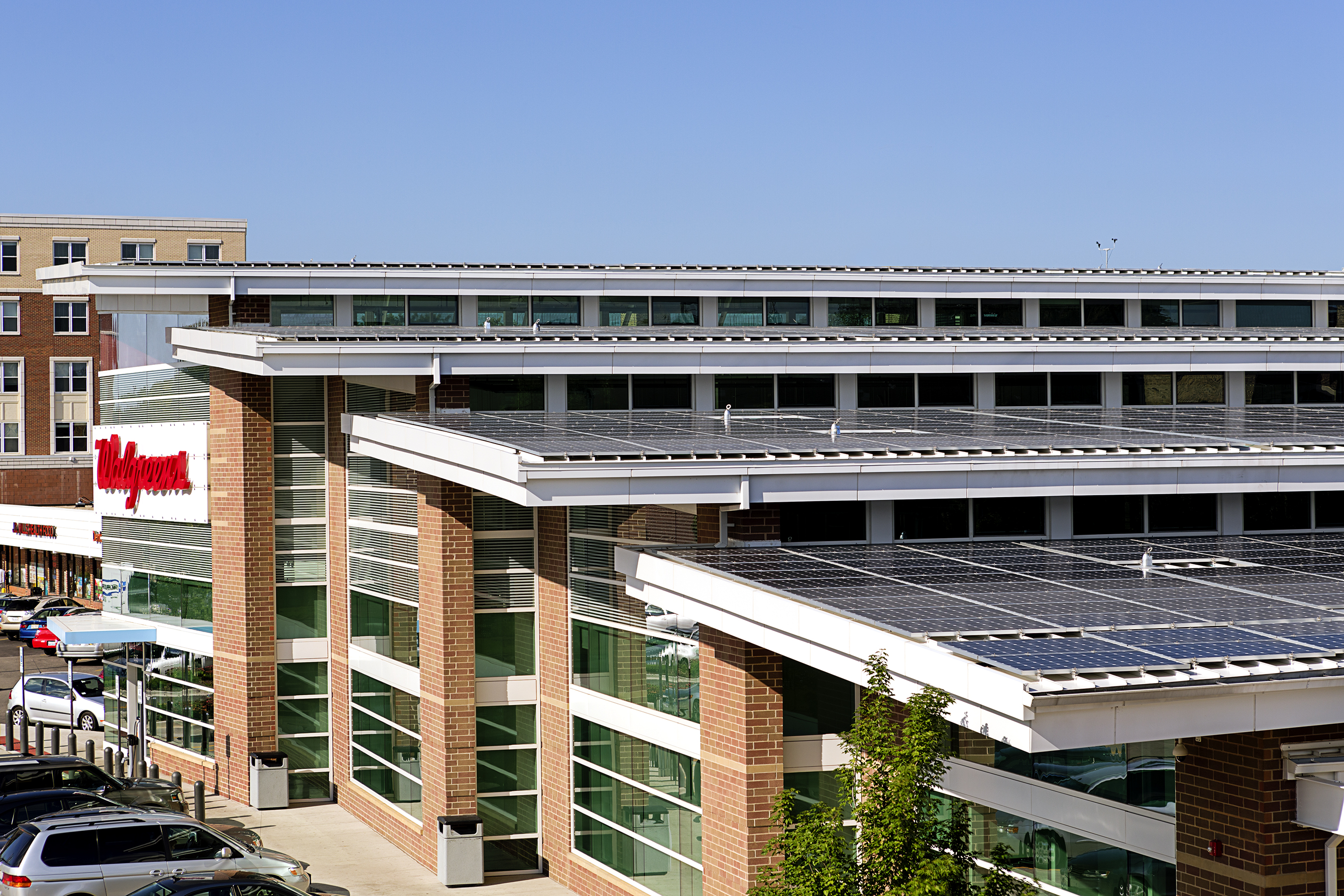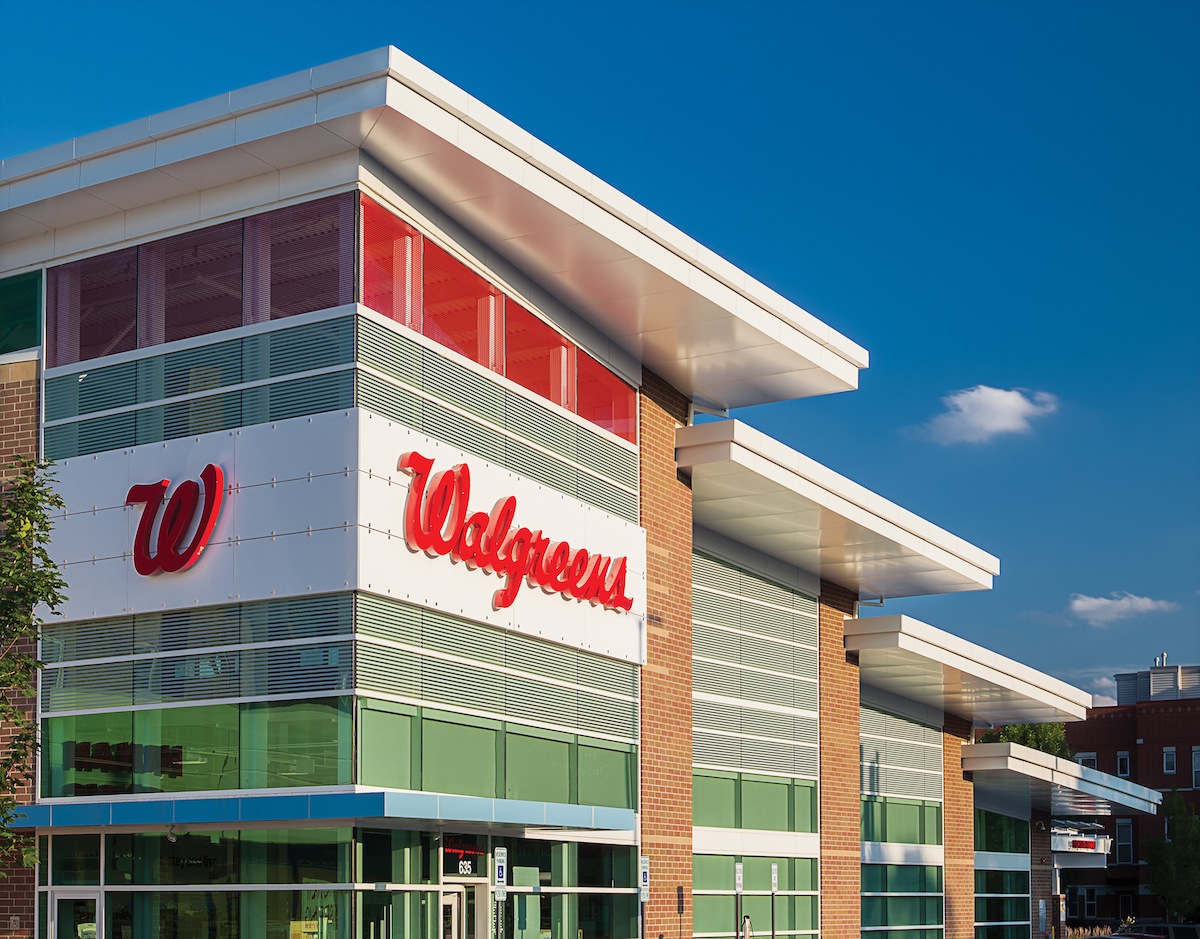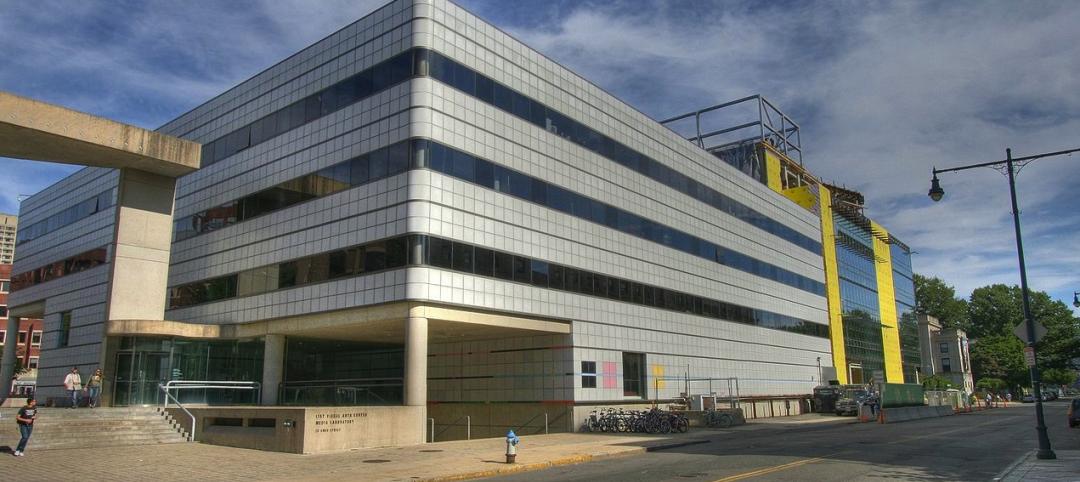Design of the nation’s first zero net energy retail store elevates the typical Walgreens shopping experience from one of convenience to relevance. The new store in Evanston, Ill., features metal and composite material from Petersen Aluminum Corp., and a roof made of tiered sections that support almost 850 solar panels. The clever building design includes enough sustainable features to attempt to earn LEED Platinum status.
The store’s architecture is open and inviting, according to the design by John Bradshaw, licensed architect/planner at Camburas and Theodore Architects in Des Plaines, Ill., and those on his team. The design required roughly 33,000 sq. ft. of Petersen bone white steel coil, plus 7,600 sq. ft. of Reynobond composite panels for the soffits, edge trim and the backdrop that frames the lighted Walgreens signs above the main entrance. Sheet Metal Supply in Mundelein, Ill., roll-formed custom 13-in.-wide roof panels to accommodate the solar panel mounting system. Petersen’s ability to stock coil in non-standard widths reduced scrap and saved money.
The best feature of the building, in Bradshaw’s opinion, is the amount of daylighting. “The clerestory windows at each segment of the roof that we used for daylight harvesting, with the cantilevered roof segments that shade summer sun and provide maximum roof area for the solar panels, the segmented walls that break apart to allow even more daylight harvesting – all these elements acting together created the best look on the building,” he insisted.
The vision for the building incorporated the elements of green design such as daylight harvesting, solar panel arrays and a mechanical mezzanine. “It was our mission to incorporate these items in a meaningful design but, more importantly, to celebrate this new icon of sustainability and to promote its virtues with a design that lifted the typical Walgreens to a new height, both literally and figuratively,” Bradshaw said.
 850 roof-top solar panels attached to metal roof.
850 roof-top solar panels attached to metal roof.
Bradshaw prefers working with Petersen Aluminum products. “Truly, Petersen Aluminum is one of the most trusted products that we specify. We have never had a performance issue with the products, the color selections are broad and they are local, which suits almost all of our needs,” he said.
Inconveniently positioned power lines over an urban lot with restrictions on all sides contributed to a challenging work site, said Chuck Heintzelman of installing contractor WBR Roofing in Wauconda, Ill. “We simply worked around our surroundings like we always do, and made it work,” he said. Regarding Petersen products, Heintzelman added, “We enjoy using PAC-Clad products. Plus, it’s great to be part of a LEED building.”
In addition to the nearly 850 roof-top solar panels that generate enough energy to power 30 Illinois homes for a year, the Walgreens store also includes:
- Two 35-ft.-tall wind turbines, using Lake Michigan breezes to generate enough power to offset annual greenhouse gas emissions from 2.2 passenger vehicles;
- Geothermal energy obtained by drilling 550 feet into the ground below the store, where temperatures are more constant and can be tapped to heat or cool the store in winter and summer;
- LED lighting and daylight harvesting;
- Carbon dioxide refrigerant for heating, cooling and refrigeration equipment;
- Energy efficient building materials.
Engineering estimates – which can vary due to factors such as weather, store operations and systems performance – indicate that the store will use 200,000 kilowatt hours per year of electricity while generating 220,000 kilowatt hours per year.
Thomas Connolly, Walgreens vice president of facilities development, said, “We are investing in a net-zero energy store so we can bring what we learn to our other stores and share what we learn with other companies. Because we operate more than 8,000 stores, anything we do that reduces our carbon footprint can have a broad, positive impact on the nation’s environment.”
Sheet Metal Supply in Mundelein, Ill., supplied the metal for the roof panels. The general contractor was Osman Construction Corp. in Arlington Heights, Ill.
To learn more about the Walgreens net zero energy store in Evanston, Ill., visit this page.
Related Stories
Sponsored | Metals | Jul 20, 2015
Life cycle assessment, and why you should care
LCA is a way of quantifying the environmental impact generated by the manufacture and delivery of a product.
Sponsored | Energy Efficiency | Jun 30, 2015
Which Is More Efficient: Wood Walls or Steel and Masonry With Continuous Insulation?
By nature, wood has nearly four times the thermal resistance of steel or masonry
Sponsored | Transit Facilities | Jun 15, 2015
Success through teamwork for landmark California project
The Anaheim Regional Transportation Intermodal Center (ARTIC) is the Grand Central Station of the future
Green | Jun 9, 2015
Fuel cell technology makes its way into energy generation
Demand for fuel cells, while modest, is growing, and cost savings are getting noticed.
Cultural Facilities | Apr 16, 2015
Milwaukee’s Lakeshore State Park visitor center will be ‘off the grid’
The plans also include a built-in wastewater treatment system and rainwater collection.
Green | Apr 7, 2015
USGBC survey shows Fortune 200 companies prioritize green building
The world’s top-performing companies are prioritizing sustainability as part of their corporate social responsibility efforts, and a majority of them are using LEED to achieve their goals, according to the new survey.
Codes and Standards | Apr 6, 2015
DOE releases Better Buildings Workforce Guidelines
The guidelines are aimed at strengthening and streamlining commercial building workforce training and certification programs for workers in energy auditing, building commissioning, building operations, and energy management.
Energy Efficiency | Apr 2, 2015
C40 cities across the globe are making sustainability a policy
The U.S. Green Building Council and C40 Cities Climate Leadership Group with the World Green Building Council released landmark green building city market briefs highlighting sustainable building policies in 66 cities around the world.














